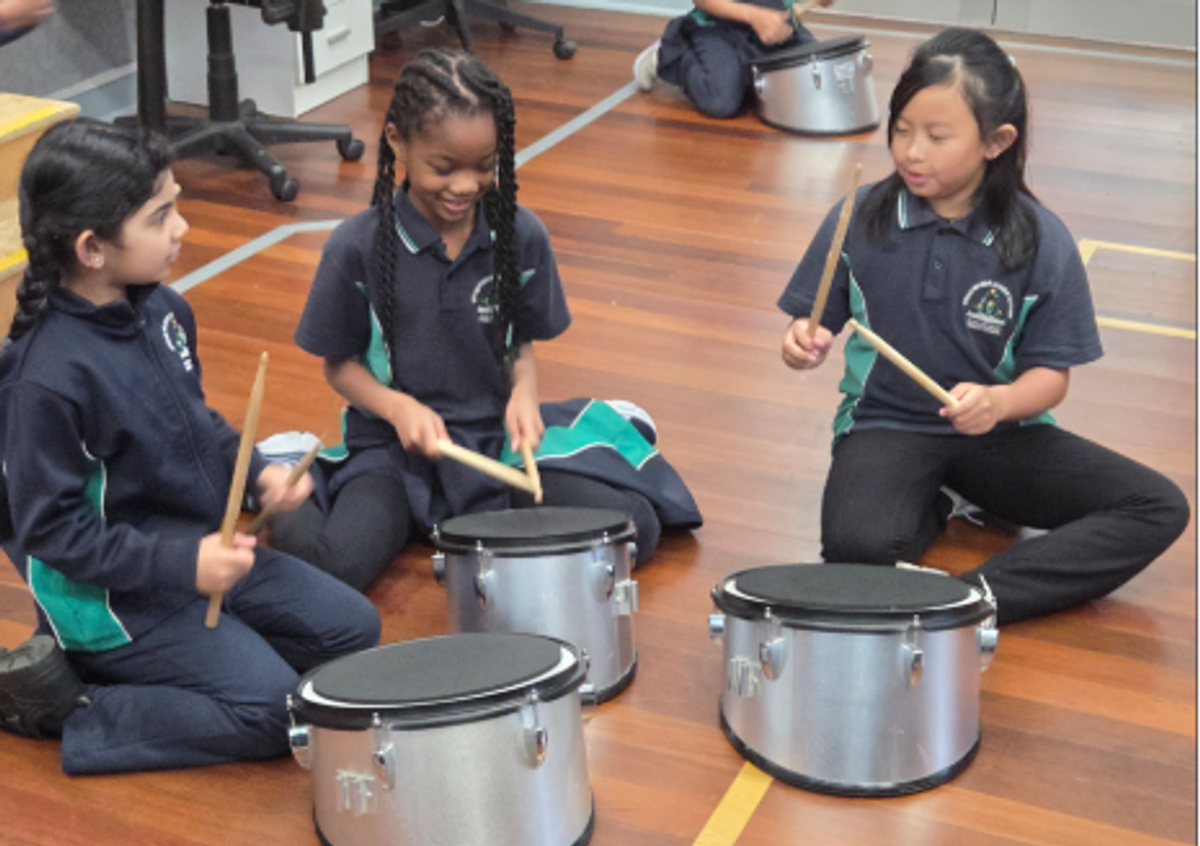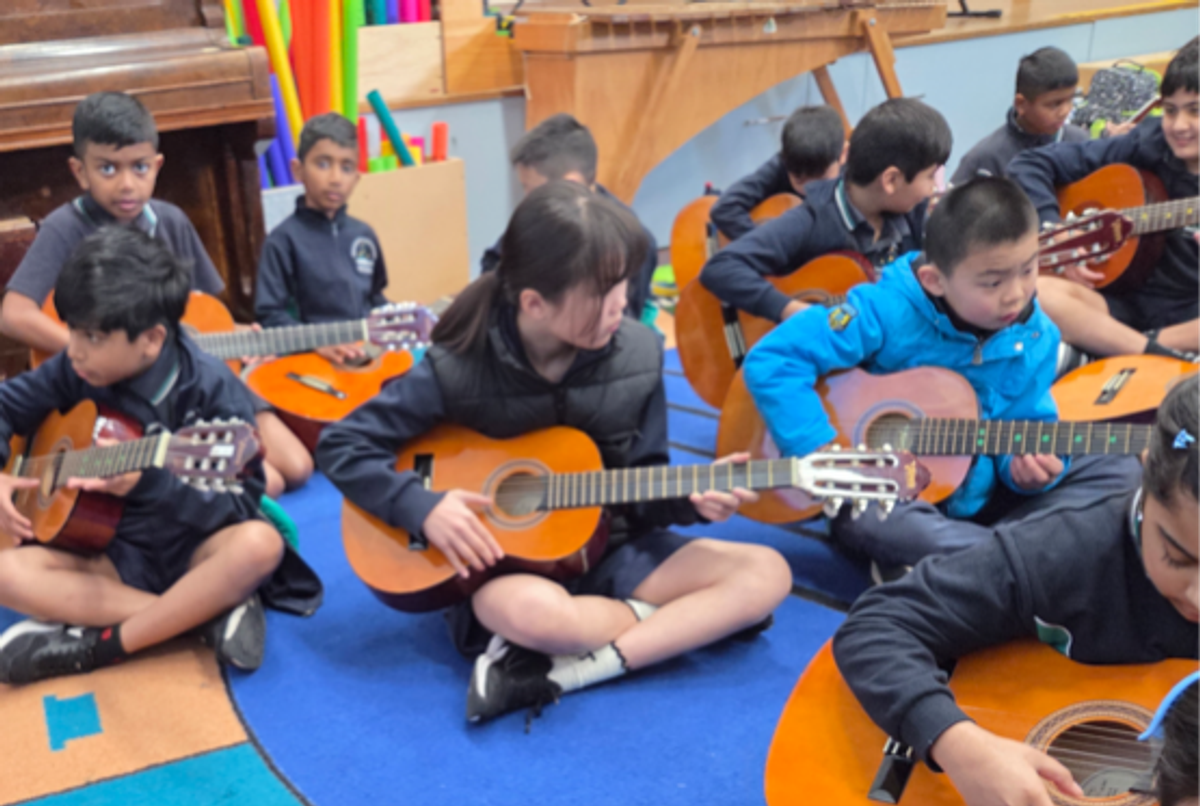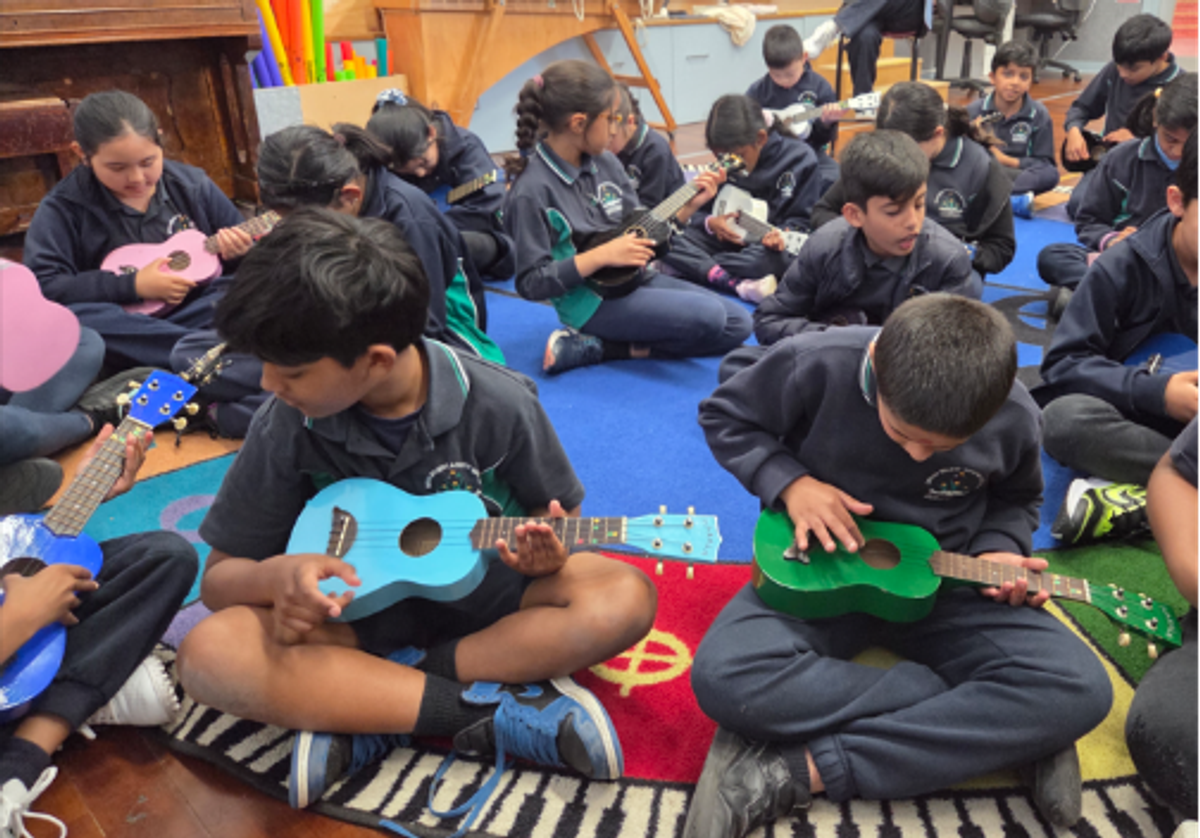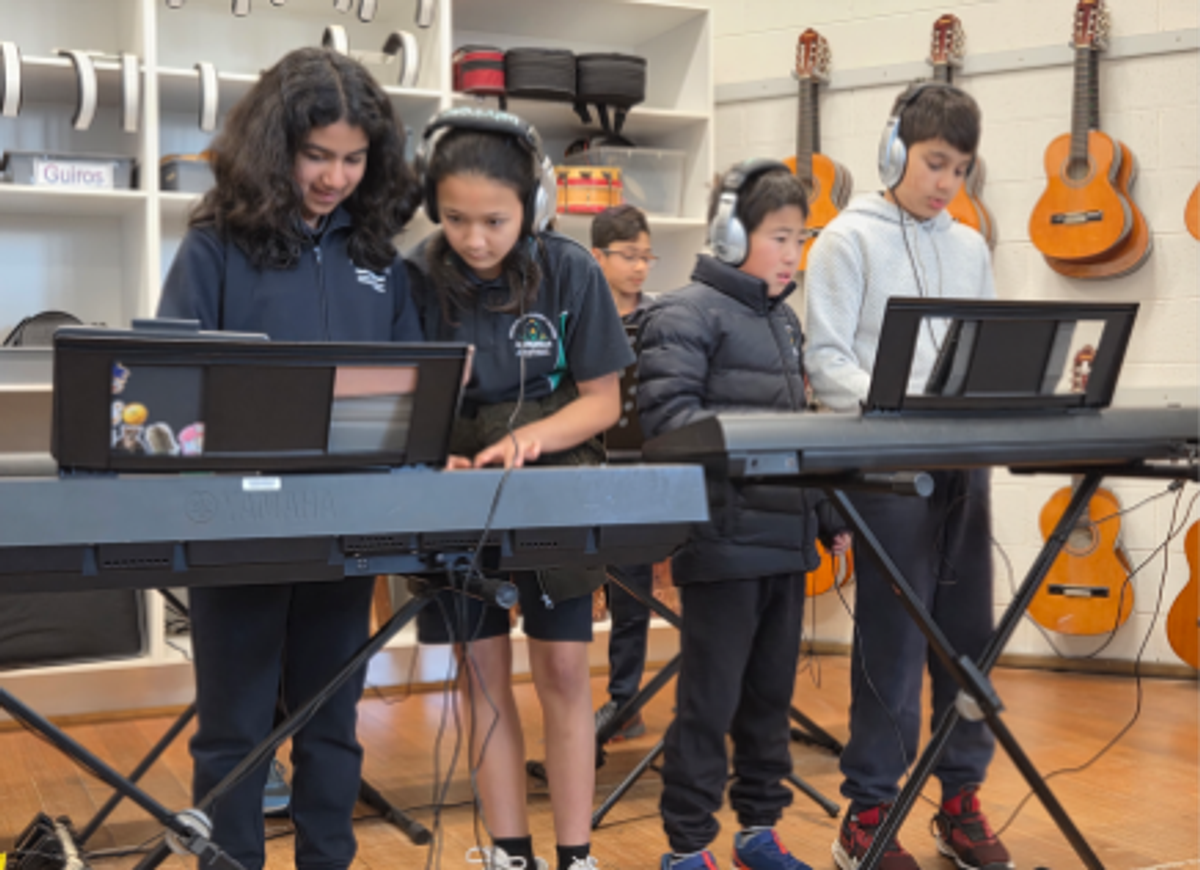Music
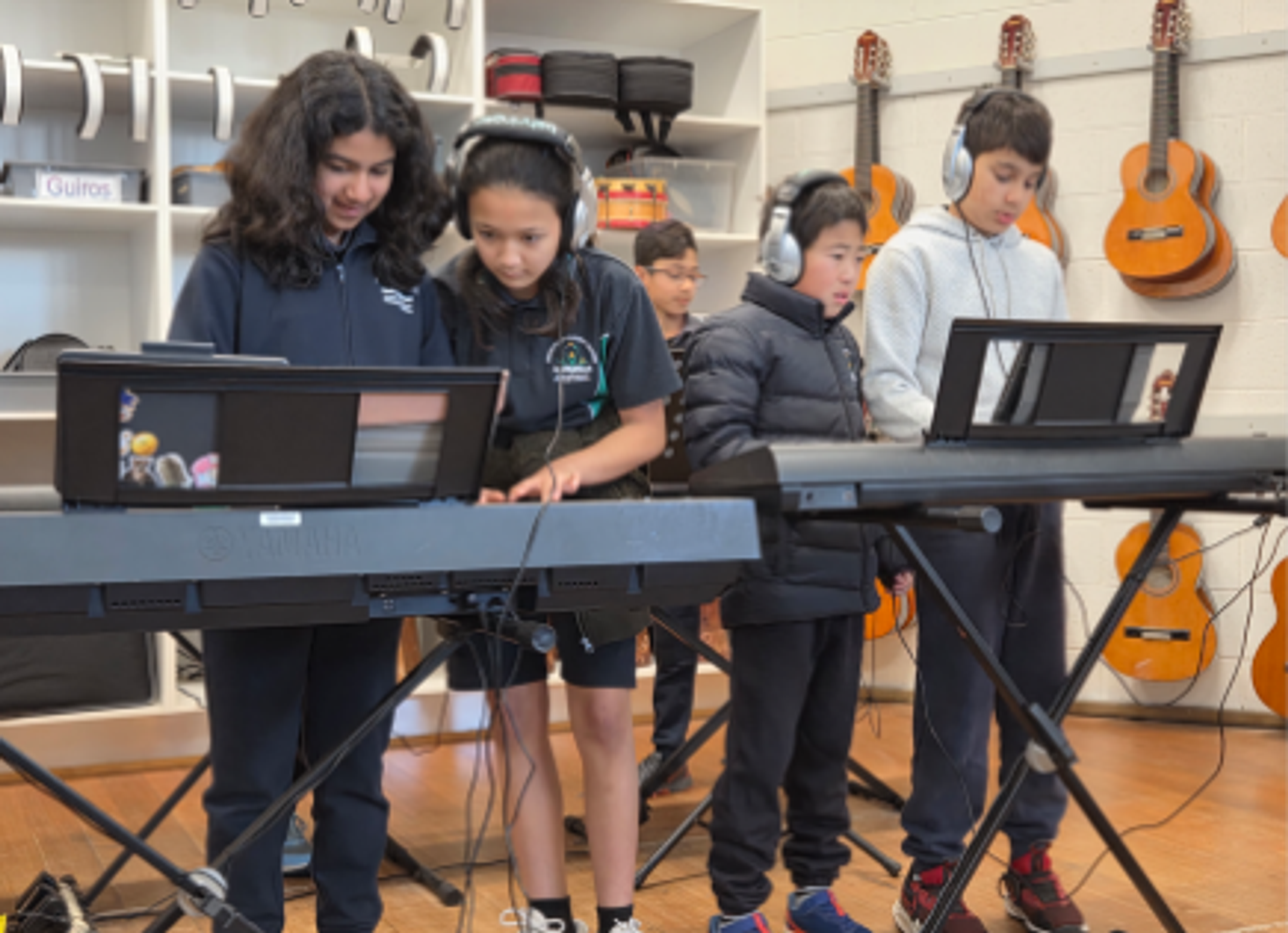
Welcome back to Term Four! I hope everyone had a lovely restful and exciting break. This term we are focusing on rhythm and beat. We will use instruments such as drums, guitar and ukulele to do this.
Year 1 and 2 Innovation will also take place this term with the students being introduced to percussion ensembles and learning skills that assist with playing these instruments with the correct technique and timing.
Prep
This term, Prep students will begin exploring the concept of beat – the steady pulse in music. Through movement, clapping, and the use of instruments such as rhythm sticks, hand drums, and tambourines, students will learn to feel, recognise, and keep a steady beat. They will take part in fun games, songs, and activities that help them understand how the beat can be fast, slow, or steady. Using beat boards and body percussion, students will practise keeping the beat alone and in groups, gradually developing their ability to stay in time. These skills will be reinforced through activities, movement tasks, and class performances, helping students build confidence in recognising and performing the beat in music.
Curriculum Links:
- Explore ideas for music through play VC2AMUFE02
Share their music with audiences VC2AMUFP01
Key Vocabulary:
beat, body percussion, rhythm sticks, hand drum, tambourines
Year 1
This term, Year One students will focus on developing their understanding of dynamics – the volume of sound in music. Using percussion instruments such as hand drums, shakers, claves, triangles, and glockenspiels, they will explore how sounds can be played loudly, softly, or somewhere in between. Through listening activities, songs, and games, students will practise recognising and performing different dynamic levels. They will experiment with using dynamics to make music more expressive, gradually building confidence in controlling volume when playing. As the term progresses, students will use their knowledge of dynamics to compose and perform their own percussion pieces for the class.
Curriculum Links:
- Sing and play music to communicate to audiences in informal settings VC2AMU2P01
- Develop listening skills and skills for singing and playing instruments VC2AMU2D01
- Select and combine elements of music when composing and practising music for performance VC2AMU2C01
Key Vocabulary: percussion instruments, dynamics, compose.
Year 2
This term, Year Two students will begin a unit focused on rhythm and drums. Using these drums, they will explore how different rhythms can be created, repeated, and layered together. Students will practise keeping a steady pulse, clapping and playing rhythm patterns, and learning to recognise long and short sounds. To build confidence, they will begin with simple call-and-response activities before moving on to more complex rhythms played in groups. Along the way, students will also explore and consolidate their knowledge of key musical elements such as tempo and beat to support their drumming skills. As the term progresses, they will compose and perform their own rhythm pieces, showcasing the techniques they have learned.
Curriculum Links:
- Develop listening skills and skills for singing and playing instruments VC2AMU2D01
- Sing and play music to communicate to audiences in informal settings VC2AMU2P01
Select and combine elements of music when composing and practising music for performance VC2AMU2C01
Key Vocabulary: drums, beat, tempo, rhythm.
Year 3
This term, Year Three students will begin a unit on guitar, developing both playing skills and music-reading confidence. They will learn about the different parts of the guitar and how to hold and play it correctly. Students will start by practising simple strumming and plucking patterns, focusing on keeping a steady beat and using the correct technique. As their skills grow, they will be introduced to basic chords and learn to play simple songs that combine rhythm and harmony. Alongside their practical skills, students will continue to strengthen their understanding of formal music notation and apply this knowledge when playing guitar. Throughout the term, they will also build performance confidence by sharing their playing with classmates and developing respectful audience skills.
Curriculum Links:
- Develop listening skills and skills for working with elements of music when singing and playing instruments VC2AMU4D01
- Sing and play music they have learnt and/or created to audiences in formal and informal settings VC2AMU4P01
Key Vocabulary: formal notation, technique, guitar, steady beat, strumming
Year 4
This term, Year Four students will begin a unit on the ukulele, building both their playing skills and musical understanding. They will learn about the parts of the instrument and how to hold and strum it correctly. Students will start by practising simple strumming patterns and open strings before moving on to basic chords. As their skills progress, they will learn to accompany songs, focusing on keeping a steady beat and changing chords smoothly. Alongside their playing, students will continue to develop their understanding of key musical elements such as rhythm, tempo, and dynamics. Throughout the term, they will rehearse and perform ukulele pieces for their classmates while also practising respectful audience skills, including listening carefully and giving constructive feedback.
Curriculum Links:
- Develop listening skills and skills for working with elements of music when singing and playing instruments VC2AMU4D01
- Work with elements of music to communicate ideas, perspectives and/or meaning when composing and practising for performance VC2AMU4C01
- Sing and play music they have learnt and/or created to audiences in formal and informal settings VC2AMU4P01
Year 5
This term, Year Five students will explore the history of Western music, focusing on the Baroque, Classical, Romantic, and Modern periods. They will learn about the key characteristics of each era, including changes in instruments, styles, and the role of music in society. Students will study the work of significant composers and discover how music evolved across time. Through listening and discussion activities, they will develop skills in identifying the features of each period, such as ornamentation in the Baroque era, balance and clarity in the Classical era, and expression and emotion in the Romantic era. To apply their learning, students will perform short pieces that reflect these styles, and they will also practise respectful audience skills by listening carefully and sharing constructive feedback with their peers.
Curriculum Links:
- Rehearse and perform music in a range of forms they have learnt and/or composed to audiences in informal and formal settings VC2AMU6P01
- Develop listening skills and skills for working with elements of music to achieve expressive effects when composing, singing and playing instruments VC2AMU6D01
- Work with elements of music and use compositional devices to communicate ideas, perspectives and meaning when composing and practising music for performance, and, as appropriate to the style, document and/or record the music they compose VC2AMU6C01
Key Vocabulary: periods of music, baroque, classical, romantic, modern.
Year 6
This term, Year Six students will begin preparing for their graduation by learning and rehearsing their graduation song. They will focus on developing good vocal technique, including posture, breathing, and clear diction, to ensure they can sing confidently and with expression. As part of the process, students will work on blending their voices as a group, listening carefully to one another to achieve a unified sound. They will also explore the meaning and emotion behind the lyrics, using dynamics and phrasing to convey the song’s message effectively. Rehearsals will involve both whole class singing and smaller group work, giving students the chance to refine their performance skills.
Curriculum Links:
- Develop listening skills and skills for working with elements of music to achieve expressive effects when composing, singing and playing instruments VC2AMU6D01
- Work with elements of music and use compositional devices to communicate ideas, perspectives and meaning when composing and practising music for performance, and, as appropriate to the style, document and/or record the music they compose VC2AMU6C01
Rehearse and perform music in a range of forms they have learnt and/or composed to audiences in informal and formal settings VC2AMU6P01
Key Vocabulary: graduation, vocal technique, posture, breathing, diction
How can you support your child’s music learning at home?
- Singing together – nursery rhymes, action songs, or their school songs help build pitch and rhythm.
- Ask them to teach you – children consolidate learning by explaining or demonstrating it to someone else.
Encourage creativity – let them make up short rhythms, melodies, or even simple songs and perform them for you.

